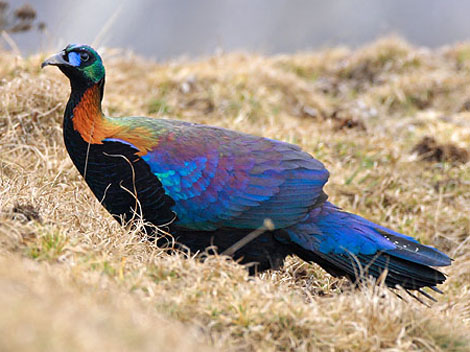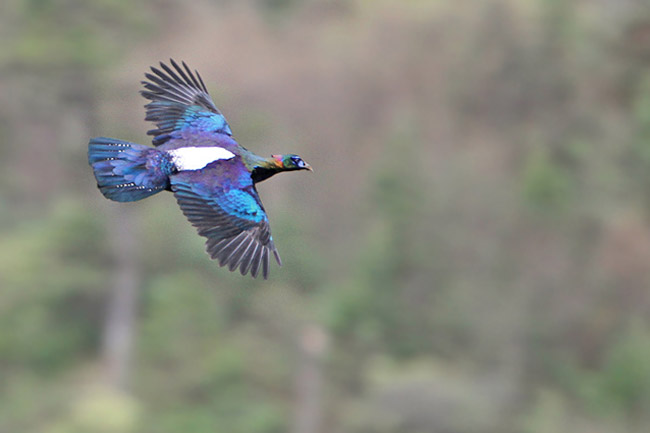
Lophophorus lhuysii
SUBFAMILY
Phasianinae (Tribe Phasianini)
TAXONOMY
Lophophorus lhuysii Geoffrey St. Hilaire and Verreaux, 1866,
Moupin, China. Monotypic.
OTHER COMMON NAMES
English: Chinese monal pheasant; French: Lophophore de
Lhuys; German: Grьnschwanzmonal; Spanish: Monal Coliverde.
PHYSICAL CHARACTERISTICS
Male 30–31 in (76–80 cm); female 28–29 in (72–75 cm);
6.2–7.0 lb (2.8–3.2 kg). Larger and more heavily built than
other pheasants in this genus.
Resident
Tragopan satyra
Resident
Lophophorus lhuysii
DISTRIBUTION
China: centered on western Sichuan, but extending into southeastern
Quinghai, southern Gansu, northeastern Tibet, and
northwestern Yunnan.
HABITAT
Alpine meadows and sub-alpine scrub adjacent to highest
conifer forests, mostly at 9,200–16,100 ft (2,800–4,900 m).
BEHAVIOR
Groups of two to eight individuals common in winter, with
single- and mixed-sex flocks being seen in spring; a vocal
species at roost in spring and summer, and when alarmed.
FEEDING ECOLOGY AND DIET
Tubers and bulbs, but also takes moss, leaves, flowers, and
some invertebrates.
REPRODUCTIVE BIOLOGY
Breeding starts during March in snow; nests at 12,500–13,100 ft
(3,800–4,000 m); clutch size three to five; incubation 28 days.
CONSERVATION STATUS
Vulnerable and on CITES Appendix I, prohibiting trade in
wild birds.
SIGNIFICANCE TO HUMANS
None known.
Other popular Animals
Photo Gallery of - Chinese monal




 Animalia Life
Animalia Life